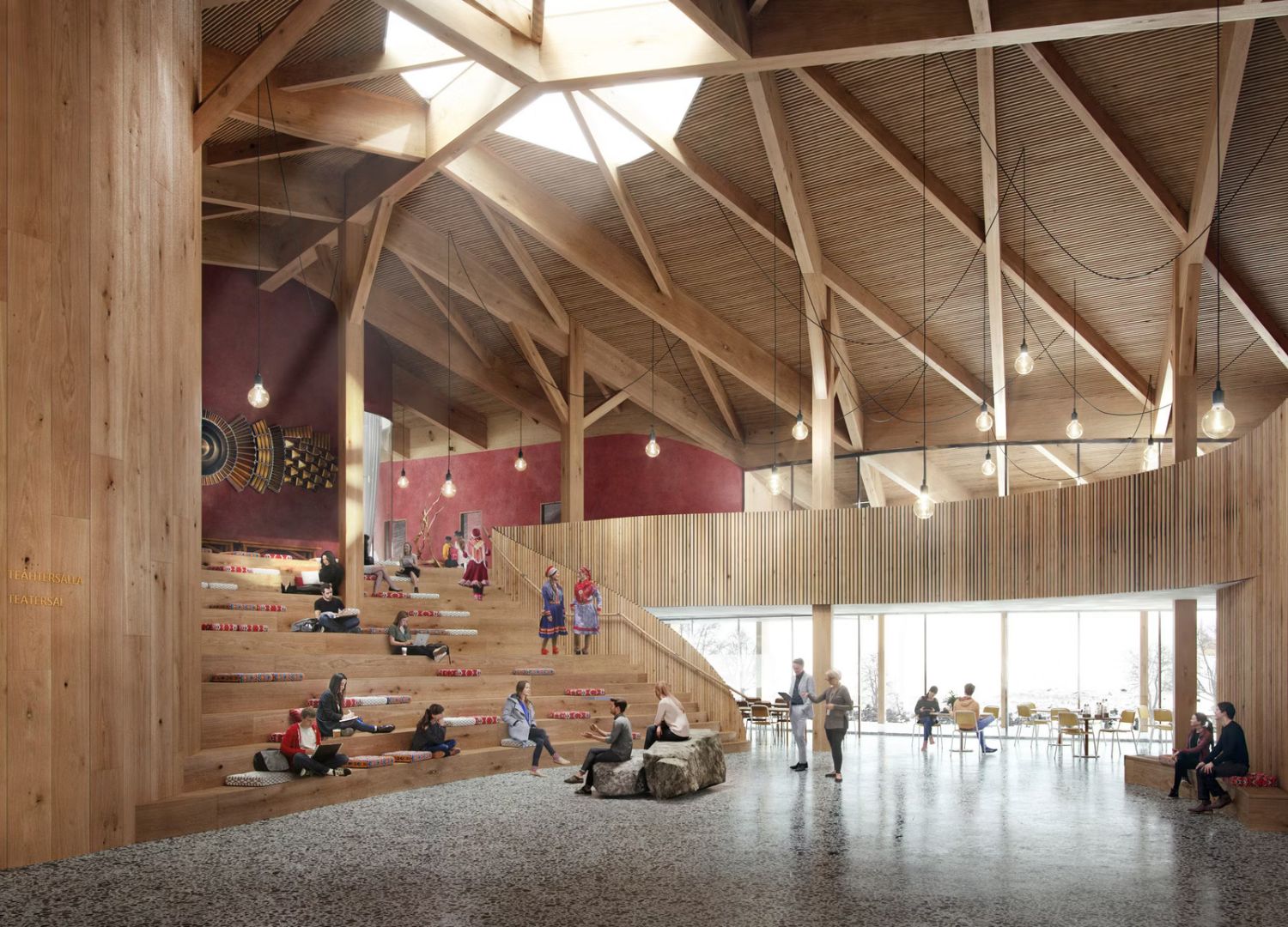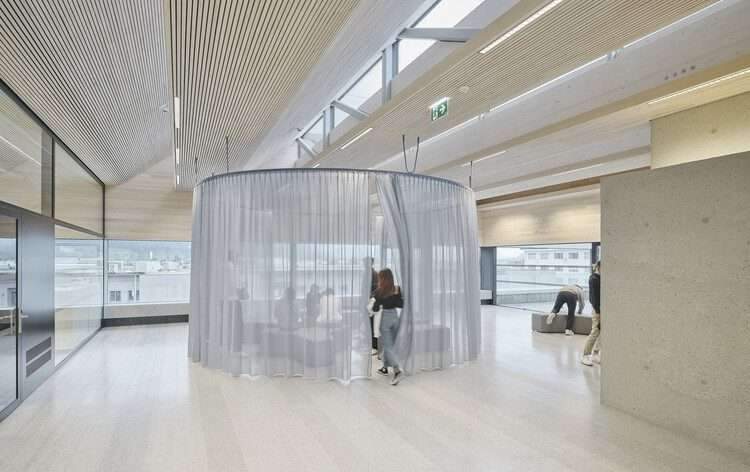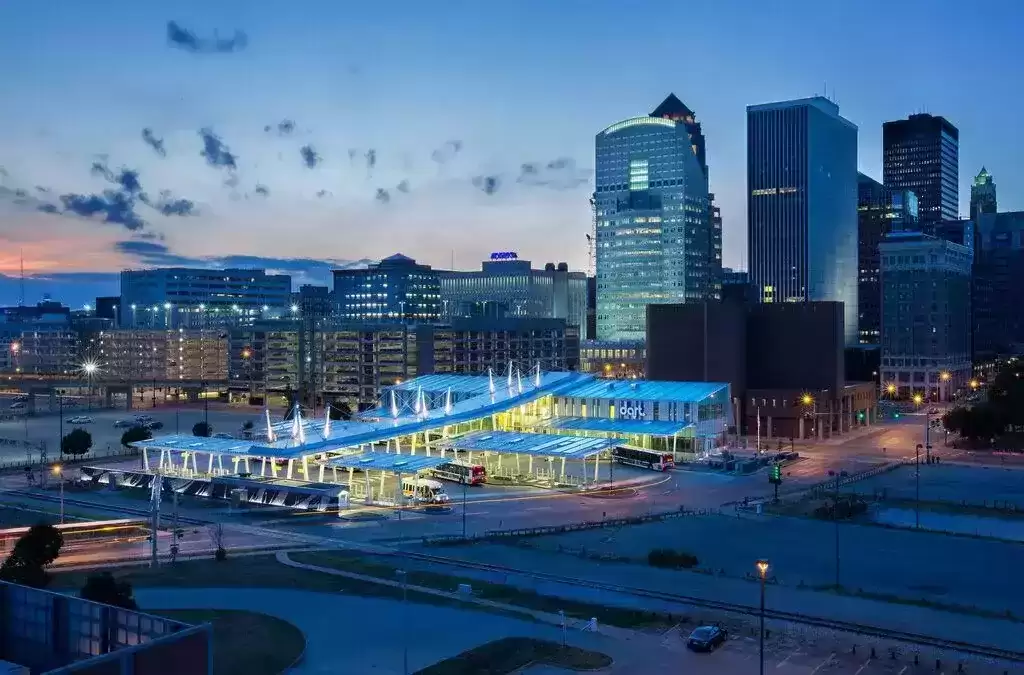Nestled within the picturesque landscapes of Norway, Čoarvemátta emerges as a beacon of Sámi heritage and innovation. This visionary shared cultural and educational facility stands as a testament to the rich legacy of the Sámi community, celebrating tradition, craftsmanship, and sustainability. Designed by a collaborative team comprising Snøhetta, Econor, 70°N arkitektur, and artist Joar Nango, Čoarvemátta embodies the essence of Sámi culture while embracing modernity and inclusivity.
Embracing Tradition and Innovation
Drawing inspiration from the innermost joint of the reindeer horn—a symbol of strength and resilience—the architectural design of Čoarvemátta seamlessly blends tradition with innovation. At its core, the facility serves as a nexus of cultural exchange, bringing together the Sámi National Theater Beaivváš and the Sámi High School and Reindeer Husbandry School under one expansive roof. This convergence fosters collaborative synergies, fostering a dynamic space where education, performing arts, and traditional handicrafts intersect.
Architectural Narrative
The architectural narrative of Čoarvemátta unfolds like a tale spun from the fabric of Sámi heritage. The exterior design, reminiscent of a lavvu—a traditional Sámi tent—embraces visitors with warmth and shelter. Organic forms and curved lines pay homage to Sámi aesthetics while mirroring the gentle contours of the surrounding landscape. Central to the ethos of the facility is the vestibule—a focal point for social interaction and cultural exchange—where visitors are invited to engage in handicrafts, theatrical performances, and immersive storytelling experiences.

Sustainability and Environmental Stewardship
Embedded within the DNA of Čoarvemátta is a commitment to sustainability and environmental stewardship. From locally-sourced materials to energy-efficient design principles, every aspect of the facility reflects the Sámi philosophy of living in harmony with nature. This dedication to ecological integrity resonates with global efforts towards environmental conservation and cultural preservation, positioning Čoarvemátta as a model for sustainable architecture.
A Symbol of Cultural Revival
Beyond its architectural brilliance, Čoarvemátta symbolizes a reclamation of cultural identity and resilience in the face of modernity. By integrating traditional Sámi knowledge systems with contemporary pedagogies and artistic expressions. The facility also empowers future generations to embrace their heritage with pride and dignity. As construction progresses, excitement within the Sámi community and beyond continues to grow, heralding the dawn of a new era in Sámi cultural revival.
Conclusion: A Testament to Sámi Resilience
In conclusion, Čoarvemátta transcends the boundaries of architecture to become a living embodiment of Sámi cultural revival. It stands as a sanctuary where past, present, and future converge in a symphony of tradition and innovation. As its doors open to the world, may Čoarvemátta inspire generations to come with its message of unity and pride. Therefore, serving as an enduring monument to the indomitable spirit of the Sámi people.
In addition, it’s important to consider the broader implications of Čoarvemátta’s impact on the Sámi community and beyond. As a symbol of cultural resilience, the facility has the potential to serve as a catalyst for positive change. Thus, fostering greater understanding and appreciation of indigenous cultures worldwide. Through collaborative efforts and shared values, Čoarvemátta represents a shining example of how architecture can transcend its physical form to become a powerful force for social, cultural, and environmental transformation.
Moreover, the legacy of Čoarvemátta extends far beyond its architectural significance. It serves as a reminder of the enduring connection between humanity and the natural world. Thus, urging us to embrace sustainable practices and preserve our cultural heritage for future generations. As we look to the future, let us draw inspiration from the spirit of Čoarvemátta and strive to create a more inclusive, equitable, and sustainable world for all.

Finally, find out more on ArchUp:






